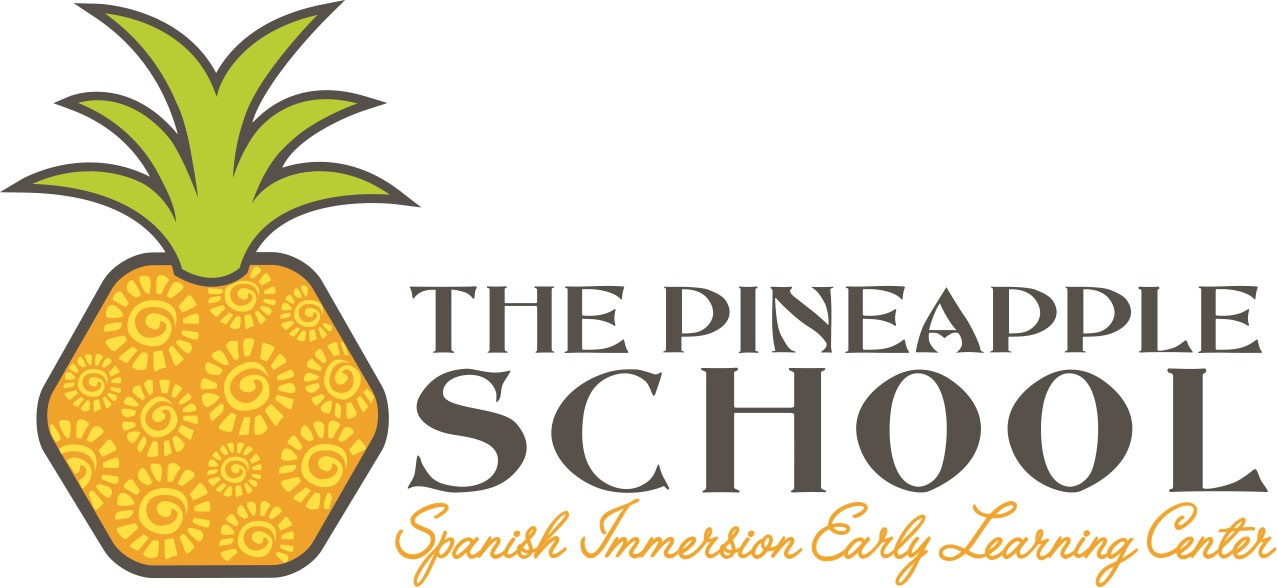Language Immersion: What & Why
Language immersion is a teaching method used to promote bilingualism, and sometimes biculturalism, whereby instruction takes place in the second language. It simulates a true immersion or study-abroad experience in a local format, where the learners are exposed to the target language and culture for several hours a day.
With young children (ages 0-5), an immersion program is ideal because students play and learn in the target language, oftentimes not realizing they are acquiring a second language. Furthermore, research demonstrates that learning a second language at an early age results in life-long benefits such as improved problem-solving, critical thinking and multitasking skills as well as listening, concentration and creativity.
The Pineapple School’s Spanish Immersion program
At The Pineapple School, the target language is Spanish. Our Spanish Immersion program provides a high-quality early learning environment where infants and young children are immersed in the Spanish language and culture through play, music, dance, literacy, games and conversation. Spanish is not the subject of instruction, but rather the vehicle. Students, from infancy through pre-K, are exposed to all the concepts and activities you would expect them to be exposed to in a traditional early childhood center, but in Spanish, so that they gradually acquire a second language. As children begin to speak and form sentences, they are socialized to adopt Spanish for classroom communication and subject learning. Remarkably, most students who begin the program as English speakers (or non-verbal infants coming from English speaking households) are able to develop native-like levels of comprehension in their second language within a couple of years, sometimes sooner.
While our Spanish Immersion program is designed for students to learn Spanish as a second language, we welcome and encourage native Spanish speakers to participate in our program. For Spanish-speaking students, our program aims to further develop their home language and help prevent them from abandoning the home language at an early age, a common occurrence among children that are English language learners.
Classrooms & Teachers that Support Language Learning
Our qualified, native Spanish-speaking teachers communicate with the children using simple, clear and repetitive language. They talk about the here and now and use objects and images to introduce new concepts. In their communication with the children, our teachers use animated gestures and facial expressions, inviting posture, and a bright, happy tone of voice. These communication techniques foster an environment where even a new student with no prior exposure to the Spanish language can understand most of the classroom communication and, at the same time, feel comfortable and safe.
Teachers encourage students to speak in Spanish in the classroom once they are able. The use of Spanish is never forced, but rather encouraged using a positive approach. For example, if children are pretend playing in the Home Center using English, a teacher might join the group, kneel to their level, and insert herself into the conversation using Spanish. When a teacher hears her students interacting in Spanish, she offers verbal praise. She introduces fun games that inspire students to speak up in the target language.
Classrooms are chockfull with books, and children are always read to in Spanish, even when the book is written in English. Reading with children introduces them to the complex nature of language and helps them to acquire important language skills. Since we know that the type of books read to children contributes to the depth of their learning, a wide variety of literature is made available to the students – fiction and non-fiction, picture books, books with rhyming and alliteration, books with patterns, books written by authors from other countries and books with poetry.
Classroom environments are rich in Spanish print. Even in classrooms where children are too young to read or recognize letters, print displayed in different forms with different meanings serves to naturally expose pre-readers to the idea that symbols (or letters) make up words and that words have meaning. They start to make connections and associate words to objects and, eventually, this translates to children building up the confidence to start reading and writing on their own.
Throughout the day, children and teachers alike enjoy listening to music and singing songs and fingerplays in Spanish. Music helps us to welcome children to the rug for Circle Time, signal a transition, set the mood for an activity or time of day, reinforce basics such as rhyming, counting, days of the week and introduce new vocabulary. From the perspective of a young child, singing and dancing to a catchy song over and over again is fun; from the perspective of our teachers, it is the perfect formula for practicing pronunciation and learning new words.
Language is embedded in culture and that is why an important part of the immersion experience for students at The Pineapple School is culture. From the meals our students enjoy at lunchtime, which are traditional of Latin America, to our colorful Christmastime celebrations, our hallways and classrooms exude culture. We believe that for anyone to truly master a second language, he/she must carry the culture within the heart.
“You can never understand one language until you understand at least two.”
- Geoffrey Willans
